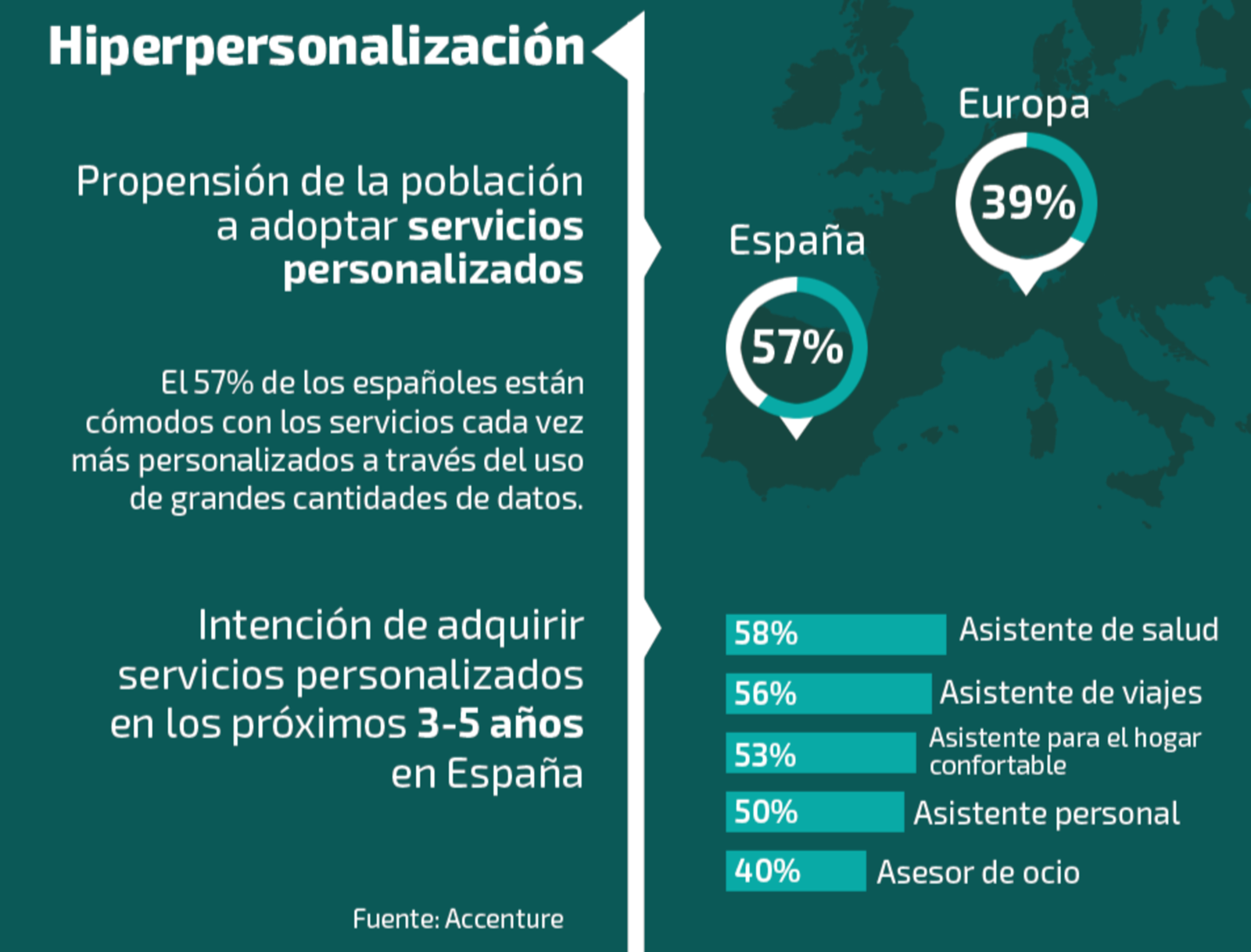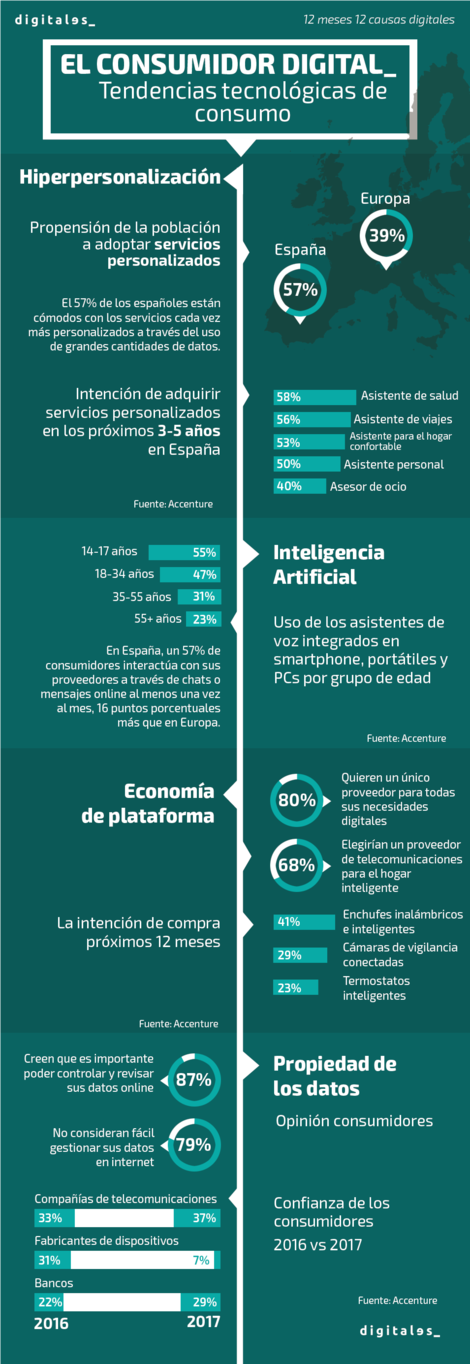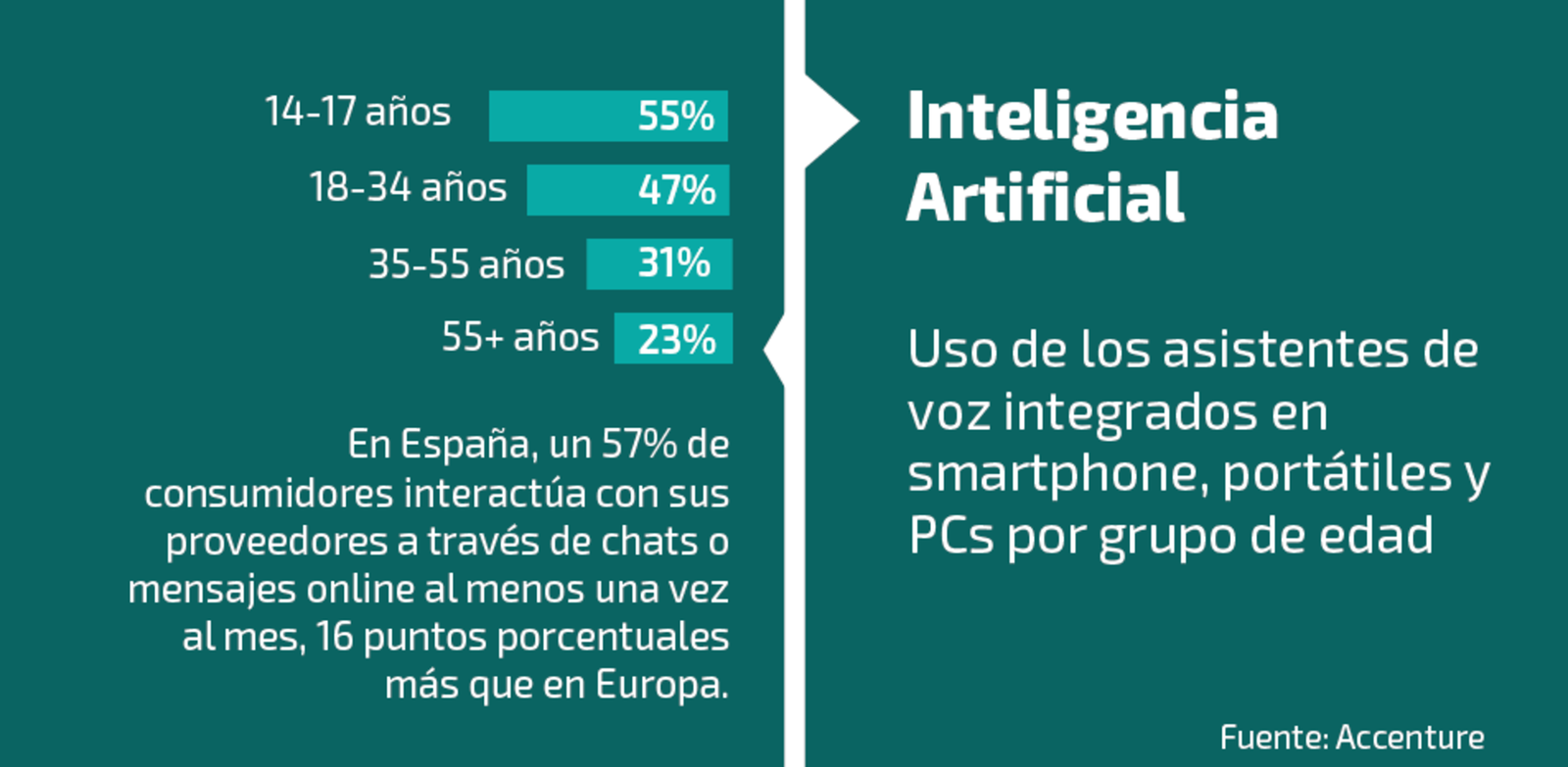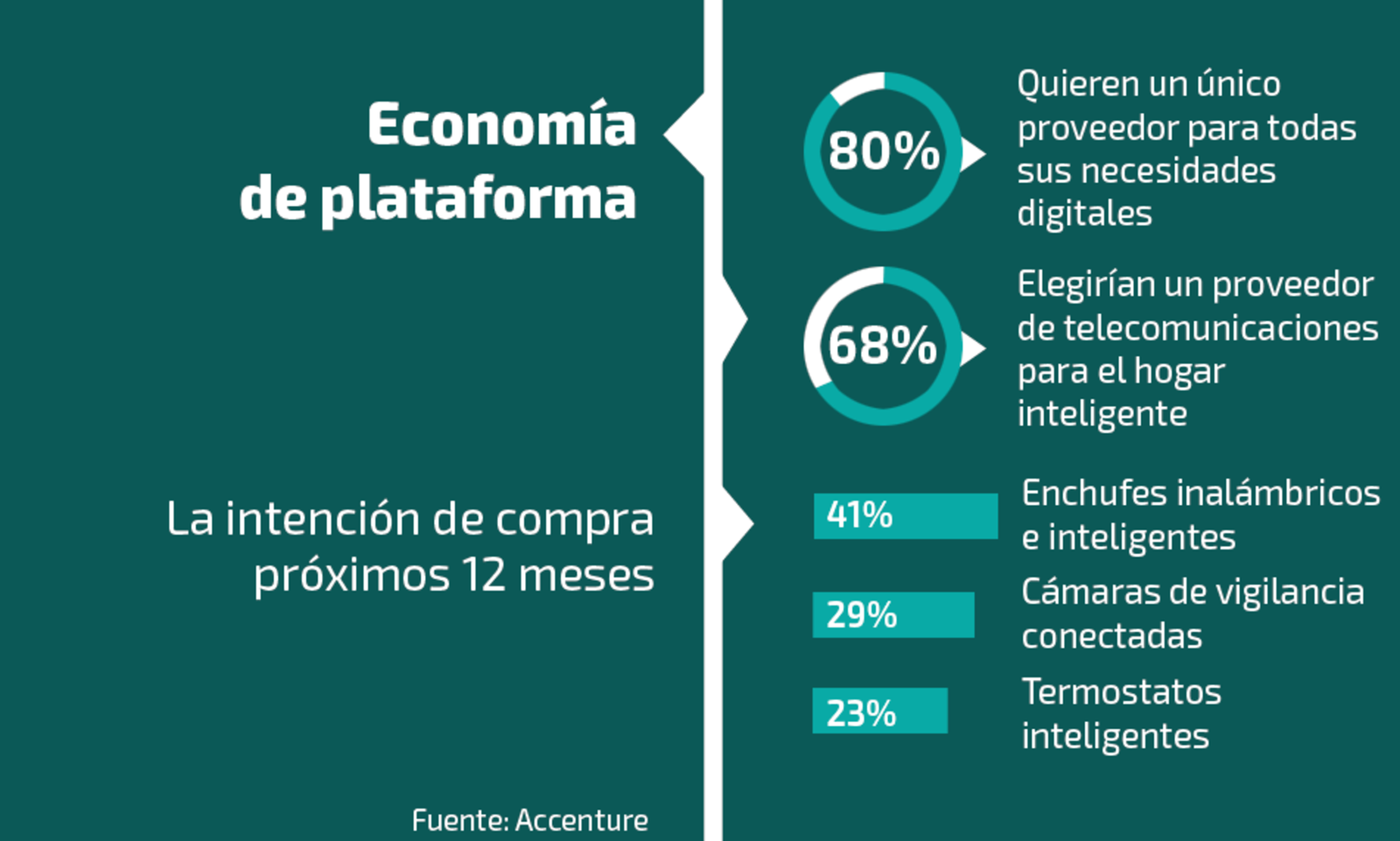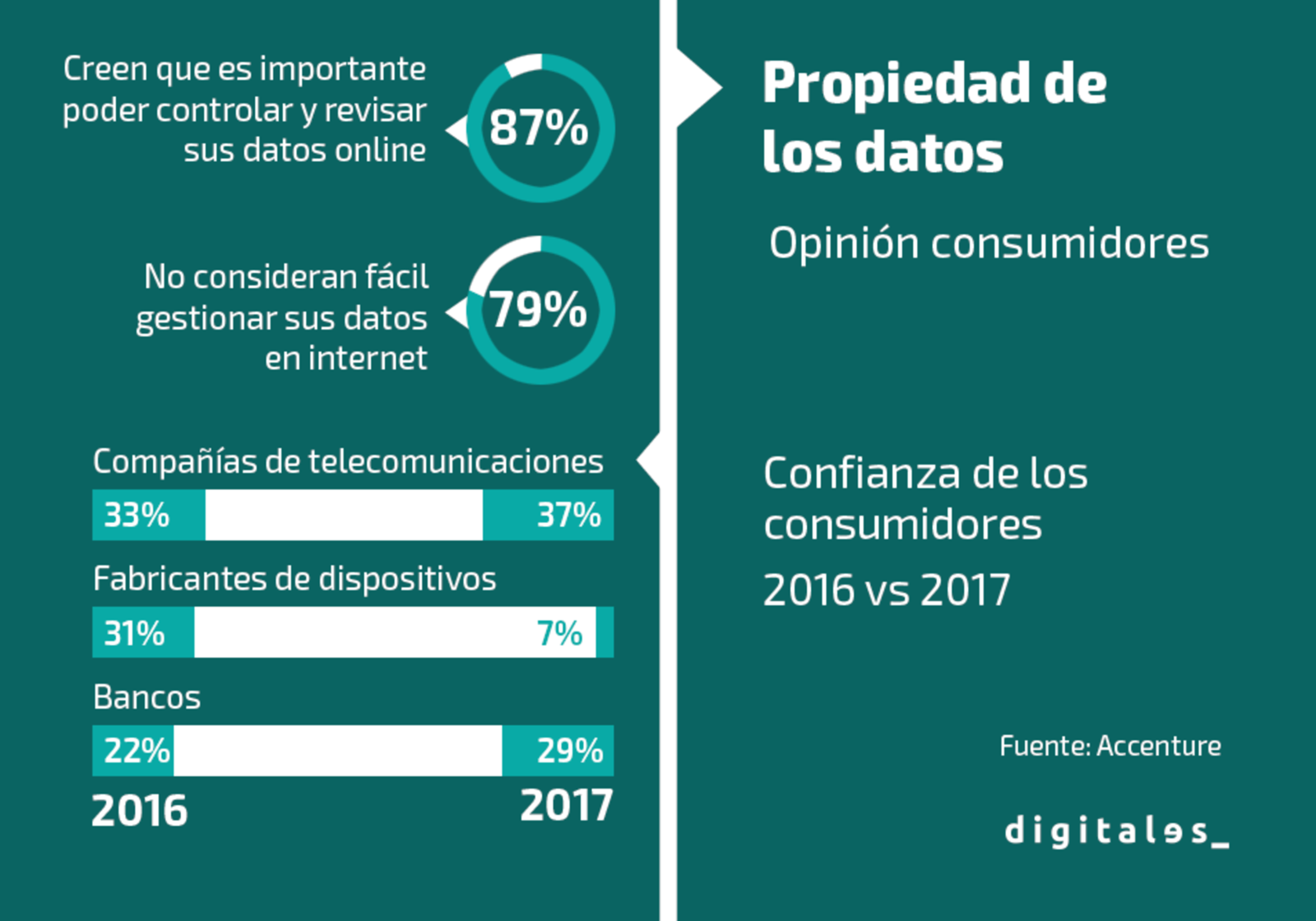24/10/2018
The digital consumer is very different from its predecessor, the analog consumer. They have more decision-making power, much more information and even more influence, as they can communicate in forums and communities where they can give their opinion on products, services and companies, defending their rights and conditioning other users.
Therefore, companies are showing great interest in getting to know this new consumer profile, for whom concepts such as comfort, ease of use and shopping experience are essential. Decisions are no longer based so much on the quality of the product, but on the whole set of experiences surrounding the purchase.
To understand this new profile, Accenture has developed the Digital Consumer Survey, a study for which more than 25,000 consumers in 26 countries were surveyed. The results allow us to define the 5 trends that mark the behavior of the new digital consumer in 2018.
Hyper-personalization
We want an exclusive, increasingly personalized experience. And this is much more pronounced in Spain than in the rest of Europe. No less than 18 points above the European average. Some 57% of Spanish consumers are comfortable with using their personal data for hyper-personalized service experiences.
We find a personalized travel assistant most appealing, followed by a travel assistant and a home assistant.
57% of Spanish consumers are comfortable with using their personal data for hyper-personalized service experiences
Artificial Intelligence
Some 90% of Spaniards between 14 and 17 years of age (73% in Western Europe) currently use or are using interested in using digital assistants. The figure drops with increasing age, 78% between 18 and 34 years of age and 71% between 35 and 55 years of age, but remains very high, also above the European average.
The interaction between the consumer and artificial intelligence systems is not a problem for us either, being in Spain up to 16 points higher than in other European countries.
3. Platform economy
We are looking for an environment that is easy to control and fully inter-connected. The data show that, for our digital needs, we prefer to do it through a single provider, and preferably a telecommunications provider.
However, we express a certain aversion to this type of products and services due to the difficulty of using them, the flaws they present at the time of use, their high prices and the security and privacy issues.
4. Customer Satisfaction
60% of consumers who experience Internet connection problems plan to switch carriers in the next 12 months in search of better service.
Consumers’ willingness to switch operators if an alternative operator offering comparable services to those they currently have were to appear is 45% in Spain, and 39% in Western Europe.
All of this highlights the fact that we are becoming less and less loyal to brands, which means that organizations must rethink their customer relationship model and eliminate complexity, relate with transparency, and strive to offer an excellent customer experience.
5. Use of data
Our confidence in the protection of your data is decreasing. In the last year it has increased in banks and telecommunications companies, but has decreased alarmingly in manufacturers. We are most concerned about the security of your financial data and unauthorized access to your home or health.
New regulations will soon come into force to eliminate malpractice in the collection of personal data, increase security and facilitate the transfer of data between member states. Therefore, companies will have to analyze their data management model and which practices will have to be extinguished.



